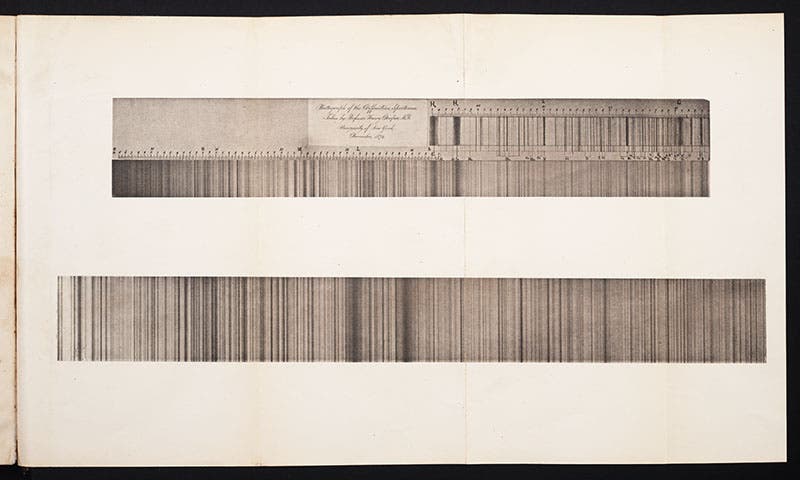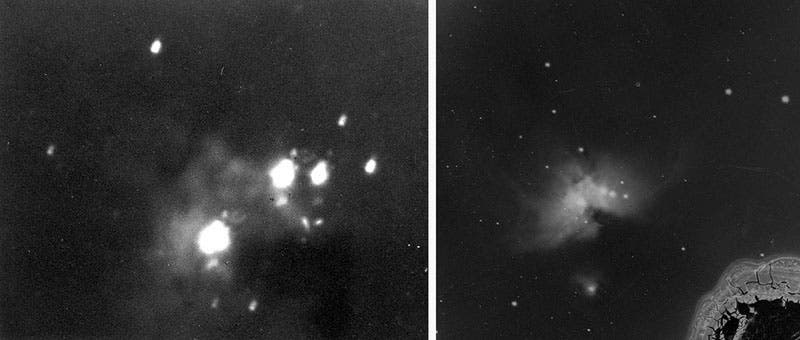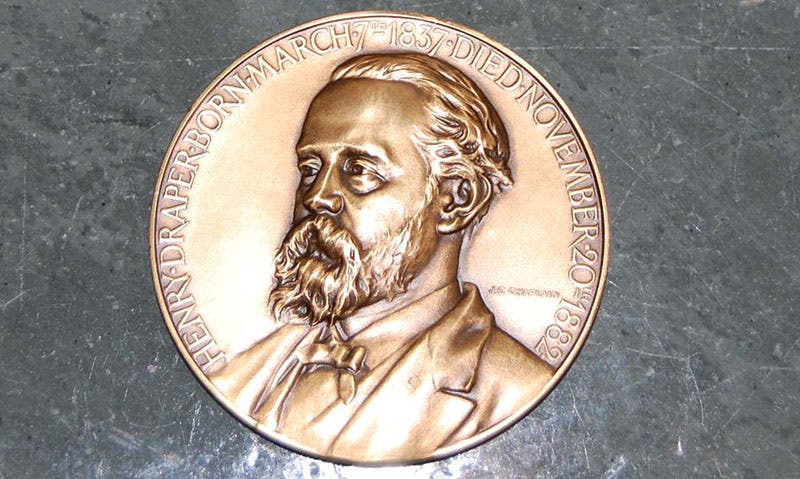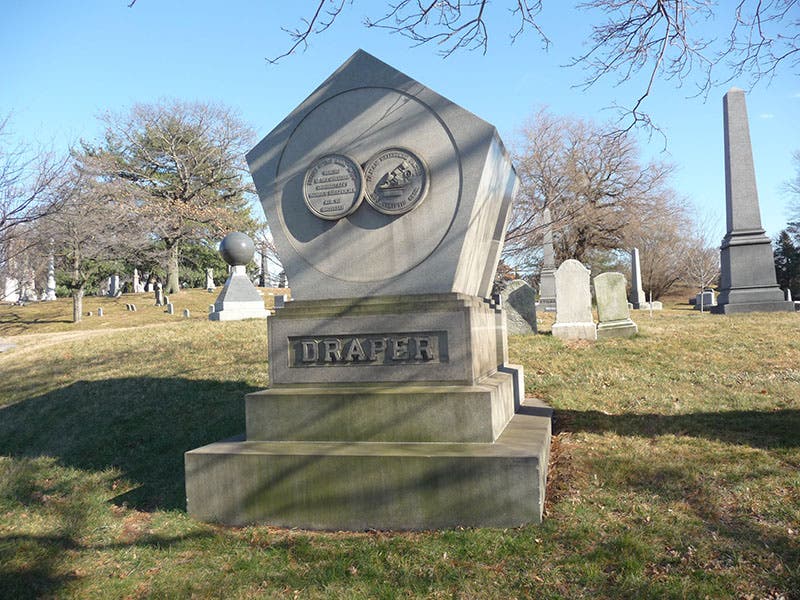Scientist of the Day - Henry Draper
Henry Draper, an American astronomer, chemist, and photographer, was born Mar. 7, 1837. Draper's father, John William Draper, was a pioneer astrophotographer – he took the world's first photograph of the moon in 1840, which is about as early as it could be done, when we recall that photography was not invented until 1839. Henry received his degree in medicine in 1857 and taught at NYU until 1873, but in the 1860s, he was side-tracked by the advent of spectroscopy, which was invented 20 years after photography. Most early spectroscopists made drawings of the spectral lines they observed, but Henry wanted to record spectra photographically, and this he managed to do better than anyone. In 1872, he recorded a photograph of a complete solar spectrum and published it, with a detail, in the American Journal of Science (second image). Four years later, he photographed a solar spectrum simultaneously with a spectrum of atmospheric air, showing that the lines of oxygen present in the atmosphere are also present in the sun. This photograph was also published in the American Journal of Science (first image).
Perhaps his most pioneering work came in his attempt to apply spectroscopy to the stars. It is not too hard to spread the light of the sun into a spectrum, but it is far trickier with a star. And if your goal is to find the dark absorption lines in stellar spectra, you need techniques and equipment that were not available to most investigators. In 1872, Draper was the first to photograph the spectrum of a star, Vega. If this was published, we have not located it. He also made two spectacular photographs of the Great Nebula in Orion. The first, in 1880, made with an 11-inch Clark refractor that he had installed on his estate in Hastings-on-Hudson, just north of New York City, was impressive, but he blew that way with another taken in 1882. We can see both of them side by side in an image provided by the Hudson Historical Society, which occupies Draper's former house and observatory (third image; the 1882 photo is on the right).
The original 1882 print is deteriorating, as one can see; fortunately, the 1882 photo was published later that year in a monograph by Edward Holden (fourth image)
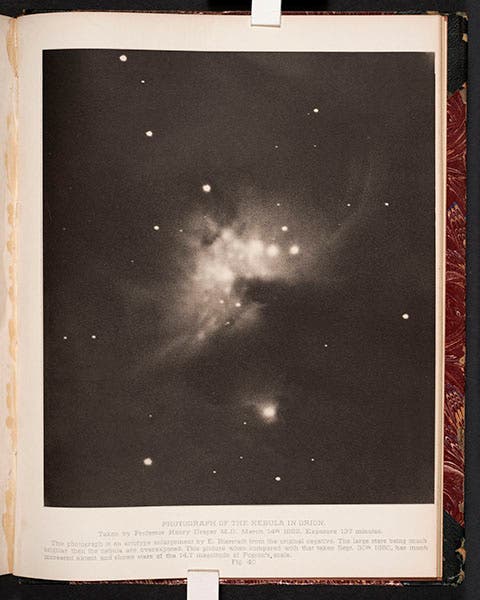
Draper’s 1882 photograph of the Great Nebula in Orion, as published by Edward Holden in Washington Astronomical Observations, 1882 (Linda Hall Library)
Henry died of pleurisy after a hunting trip to Colorado in 1882, only 45 years old, and it was left to his wife Anna to establish a fund, the Henry Draper Memorial, at Harvard College Observatory, to support a massive project to classify stars by spectral type. By 1918, over a quarter-million stars had been so classified, and multiple volumes of the Draper Catalogue were published over the next 6 years.
Anna also established the Henry Draper Medal, to be awarded for special distinction in exploring astronomical physics. Recipients are selected by the National Academy of Sciences, and the Draper Medal is one of the most coveted awards in astrophysics (fifth image). Henry had received a medal of his own, the Congressional Medal in 1874, for his work in organizing the U.S. program to observe the transit of Venus of that year. When Henry died and was laid to rest in beautiful Green-wood Cemetery in Brooklyn, his monument, which we see here from the back, replicated that medal (sixth image).
An 1882 gathering of the National Academy of Sciences in Draper’s home in New York City, at which Henry collapsed and then died, forms the opening scene of Dava Sobel’s excellent recent book, The Glass Universe (2016), where Draper’s legacy and Anna Draper play a major role.
Dr. William B. Ashworth, Jr., Consultant for the History of Science, Linda Hall Library and Associate Professor, Department of History, University of Missouri-Kansas City. Comments or corrections are welcome; please direct to ashworthw@umkc.edu.


